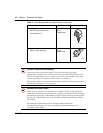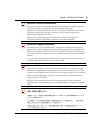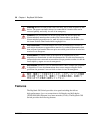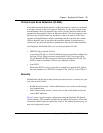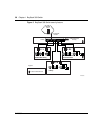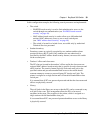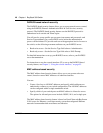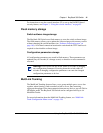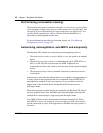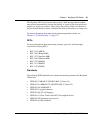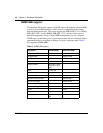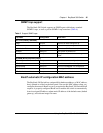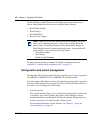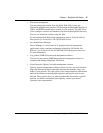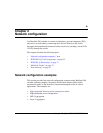
42 Chapter 1 BayStack 380 Switch
212859-A
Port mirroring (conversation steering)
The port mirroring feature (sometimes referred to as conversation steering) allows
you to designate a single switch port as a traffic monitor for a specified port. You
can specify port-based monitoring for ingress and egress at a specific port. You
can also attach a probe device (such as a Nortel Networks StackProbe, or
equivalent) to the designated monitor port.
For more information about the port mirroring feature, see “Port Mirroring
Configuration screen” on page 142.
Autosensing, autonegotiation, auto-MDI/X, and autopolarity
The BayStack 380 switches are autosensing and autonegotiating devices:
• The term autosense refers to a port’s ability to sense the speed of an attached
device.
• The term autonegotiation refers to a standardized protocol (IEEE 802.3u or
802.3z or 802.3ab) that exists between two IEEE -capable devices.
Autonegotiation allows the switch to select the best of both speed and duplex
modes.
• The term autopolarity refers to automatic detection of transmit and receive
twisted pairs.
Autosensing is used when the attached device is not capable of autonegotiation or
is using a form of autonegotiation that is not compatible with the IEEE 802.3z
autonegotiation standard. In this case, because it is not possible to sense the
duplex mode of the attached device, the BayStack 380 Switch reverts to
half-duplex mode.
When autonegotiation-capable devices are attached to the BayStack 380 Switch,
the ports negotiate down from 1000 Mb/s speed and full-duplex mode until the
attached device acknowledges a supported speed and duplex mode.
Auto-MDI-X detects receive and transmit twisted pairs automatically. When
auto-MDI-X is active, any straight or crossover category 5 cable can be used to
provide connection to a port. If autonegotiation is disabled, then auto-polarity is
not active.



